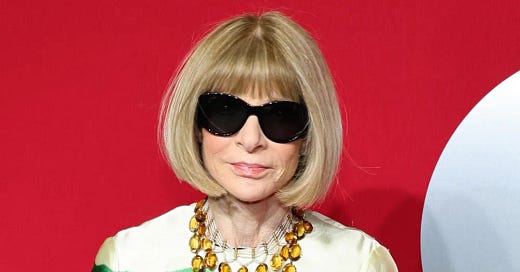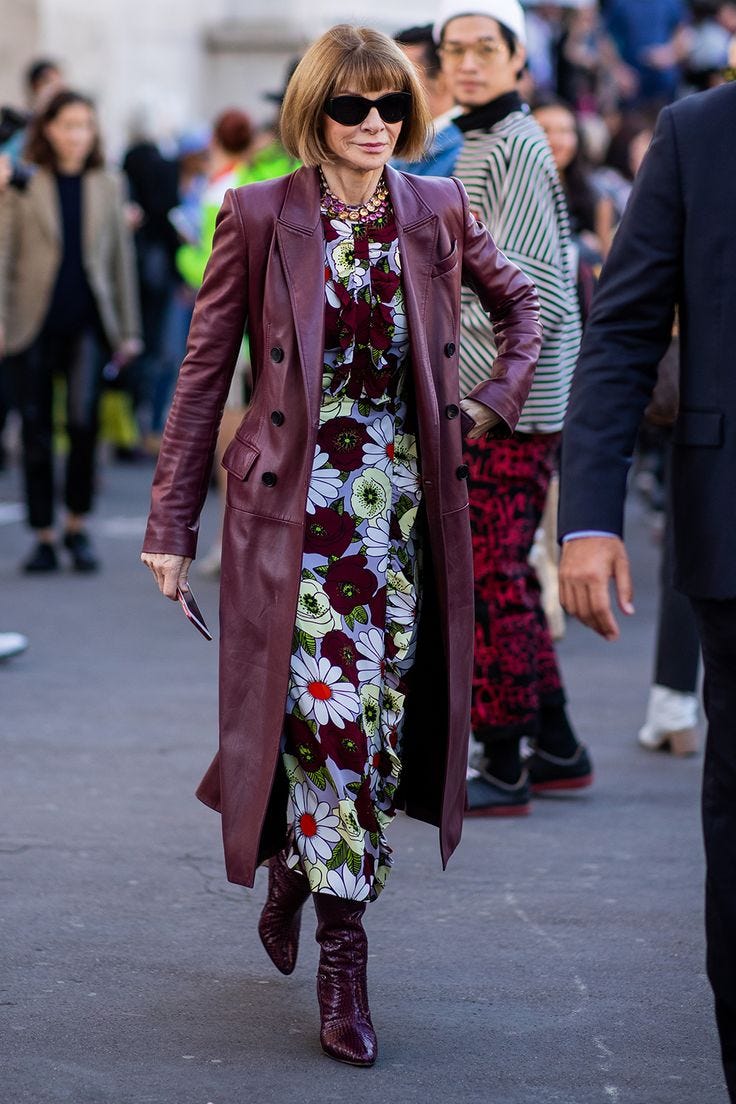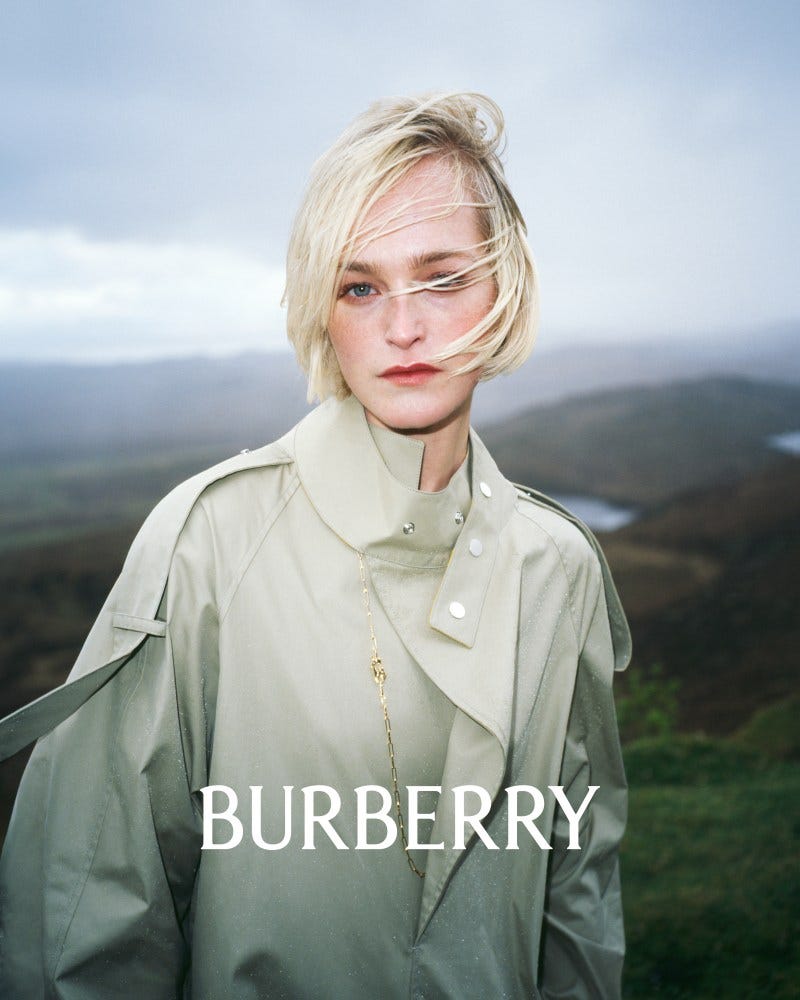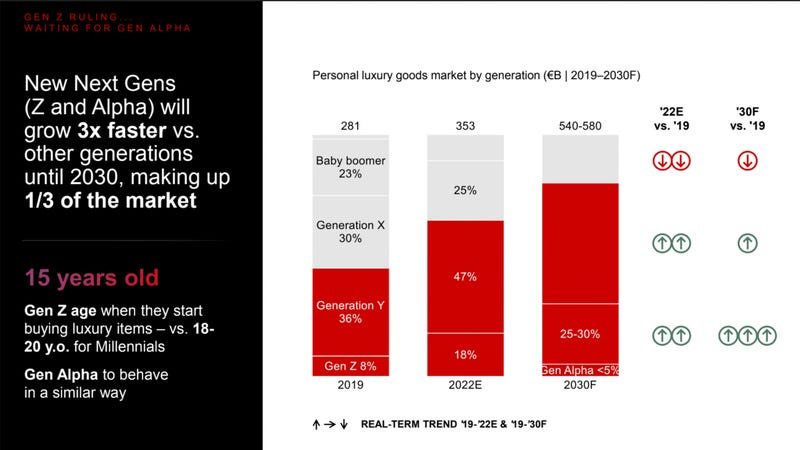The power of coherence in fashion
How consistency and personal branding define identity in an industry in constant evolvement
Hello everyone, this is Florence, a gen z passionate about the continous shifts inside the world of fashion and how these influence us directly.
Monthly Newsletter.
Free.
Please share with your friends, family, boyfriends/girlfriends and share your thoughts :)
If you don’t know me, I studied Fashion Design in Milan and after two years of various work experiences in fashion across Milan and New York, I decided to pursue a Master in Fashion Luxury Management and Marketing at ESMOD Paris. This newsletter is a mix of thoughts and perceptions that I have on the industry, taken from what I read and see together with conversations with young professionals around me.
You may not agree with what I say so please, don’t forget to comment!
This September I moved to Paris and the style is influencing me whether I like it or not - so let’s just say I’m experiencing a style crisis.
I think I get influenced by external factors (social media) when shopping and I feel we all dress the same, but at the same time I tend to keep a pretty strong personal identity when dressing for a daily basis and if you don’t, it’s because you probably haven’t found your true essence, which is fine.
What I dislike about Fast Fashion brands is that they made it harder for people to have their own identity because it made the process of buying things too easy and not risky at all. So people just buy ‘stuff’ and then if they don’t work, they will sell them on Vinted thinking they did an amazing action.
I think I tend to stay loyal to my silhouette regardless the trends, but I can’t deny that I do get influenced by external factors whether I like it or not.
So, here’s a little theory:
I believe there are two types of people when it comes to personal style:
The Explorers: They are in constant search of the perfect uniform, experimenting with new styles and incorporating statement pieces to add a twist to their wardrobe.
The Purists: They stick to their style, knowing exactly what works for them and they rarerly stray away from their chosen path. They usually shop less often and find boring, or even hate, the process of shopping.
FACT: A personal uniform often emerges when we discover what flatters us the most. It becomes a safe space defined by the codes that you know work for you. Consistency in style can be a source of comfort and confidence, which is why we all adopt a signature look over time.
I recently listened to a podcast that made the connection between the fact that a stable uniform helps depicting an imagery of trust and safety. If you think about it, someone that changes its style often gives out a sense of confusion and so, not reliable in the long term.
It’s not surprising that people in leading roles tend to stay true to their personal branding and also have people behind them who shape the best image strategy to send a message of stability to their community - aka personal stylists.
Consider Anna Wintour and Steve Jobs as prime examples of this principle. Both have highly recognizable styles—Anna with her signature bob, sunglasses, and structured silhouette, Jobs with his black turtleneck and jeans. Their consistency in personal style became part of their personal brand, reinforcing their authority and influence in their industries.
Brenda is another good example, she created her brand identity by wearing solely white or black. Her wardrobe is a dream made of Tabis and Margiela/Chanel and Helmut Lang clothes. Her job is amazing too but that’s another thing.
This fact ties to the psychological concept that what we wear influences not only how others perceive us but, most importantly, how we perceive ourselves.
There’s a psychological theory called Enclothed Cognition, that explores how what you wear does not only affect what other people perceive of your persona but also what you project on yourself too. It’s not the specific clothing - it could be a suit or casualwear - that matters, but rather how the wearer internalizes its meaning. A confident look can enhance focus, boost confidence, and even improve task performance when it aligns with the wearer's self-perception.
(Now you know what to wear on your next important meeting)
Yet, true reliability is not based on “fads” (short-term trends) but more on a consistent identity in the long - term. Staying true to oneself it communicates authenticity and builds trust over time.
—> Luxury Brand Identity
Now, associate this thought to what a strong brand-identity does to a brand - A strong brand image is the cornerstone of a brand’s identity, anchoring its values and ensuring it remains recognizable and reliable to consumers over time. Recently, several luxury fashion houses have struggled to maintain this clarity due to the ongoing “musical chairs” of creative directors. With each new appointment, the creative vision shifts, leaving consumers with an increasingly fragmented and unclear sense of what the brand truly represents. This cycle risks diluting the brand’s identity and eroding the trust and connection that are vital in the competitive luxury market.
Burberry being one bad example -
Two years ago I wrote about the new appointment of Daniel Lee at Burberry and I was actually very excited because he is the artefice behind the big Bottega Veneta explosion back in 2018 so I was hoping - same as the Burberry’s CEO - that the brand could go through a sort of re-branding, trying to catch the younger audience attention.
But no.
Their change of logo and their new brand identity is not claiming the attention they were hoping for because of inconsistency between what the brand is offering and the demand for their products. Their products lost value when they became too associated with vintage markets. They produced too many of them and now there’s a shortage of demand and the brand in general lost the popularity it had, which will be hard to regain.
This is only a small reason of the unsuccess of Burberry, I will delve deeper on this case study another time.
So, Consistency is the Key -
Whether through a personal uniform or a brand identity - it creates a sense of reliability but the most difficult challenge that brands have to deal with, is time.
If the brand image doesn’t evolve in the right way, the brand may lose attractiveness from the young consumers (Gen Z and Gen Y) - which are now driving the most sales in luxury.
So basically what brands need to do is to stay on top of the curve constantly, evolving while keeping the same codes over the years, decades.
If the job it’s done correctly, consumers should be recognizing the brand’s aesthetic, values and morals by watching an image without a logo.
That’s why brands are changing creative directors so often.
Who is winning at this game as of now?
Prada
Miu Miu
Loewe
Bottega Veneta
Alaïa
Saint Laurent
Chloè
Celine
and few others, I’m open to discussions.
Nice articles I’ve recently liked:
Speaking of: The dangers of self branding in fashion
Will the next social media trend be turning off the phone? !!!!! a must read
See you next month in your newsletters! :)







